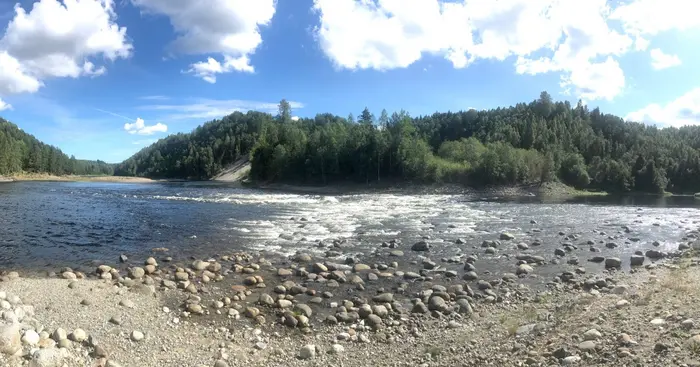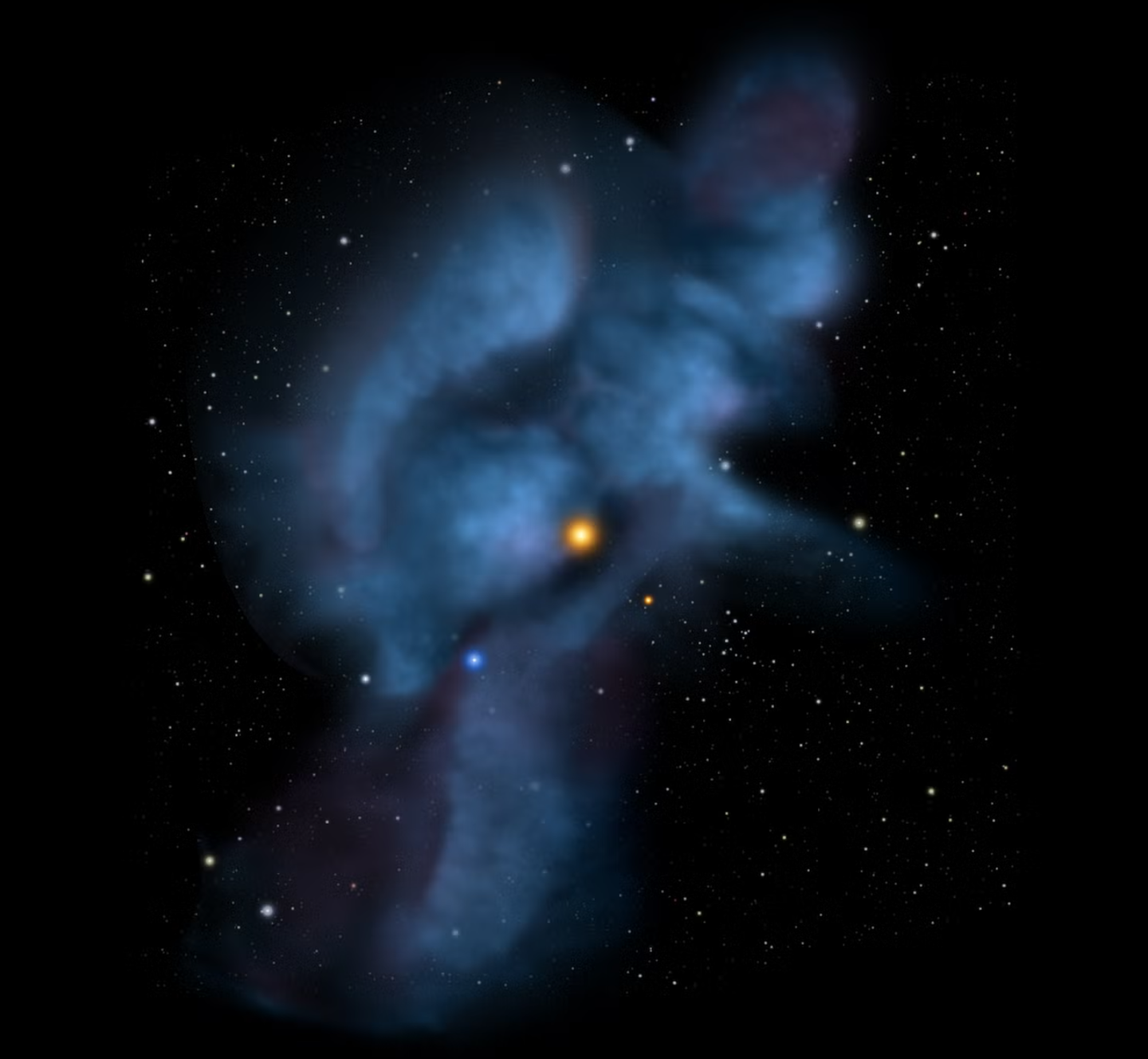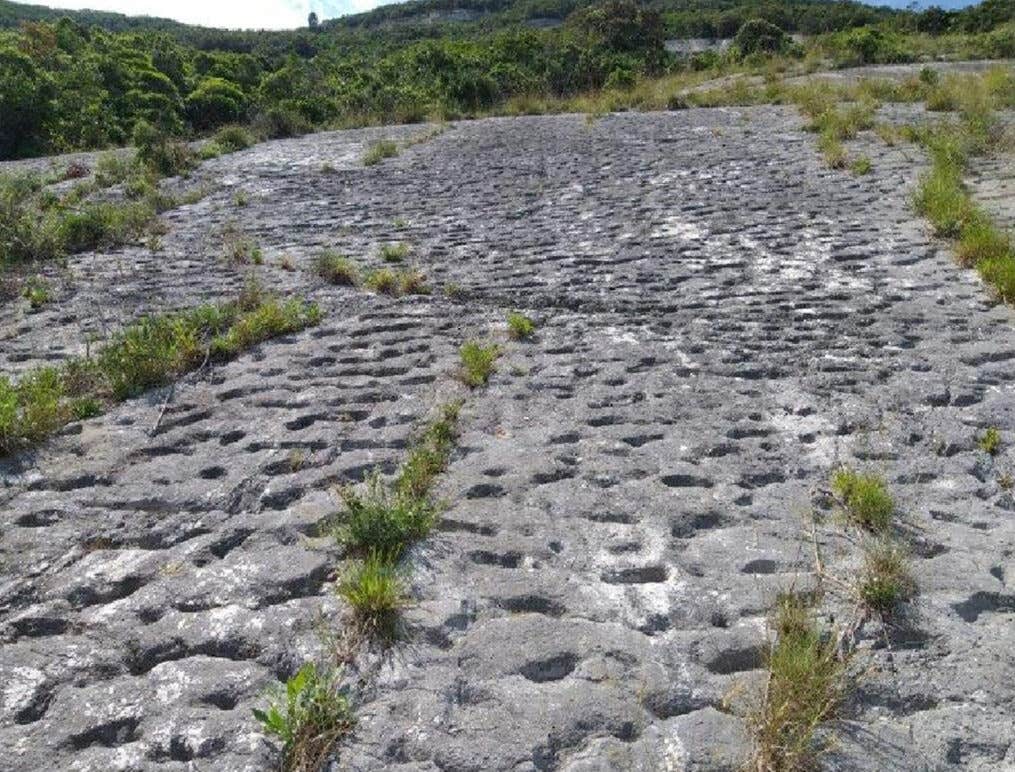Scandinavia was once a part of Greenland, study finds
Researchers made a major discovery about Earth’s crust, unraveling a tale that dates back over three billion years and points to Greenland

In a Finnish outcrop nestled between some of Northern Europe's oldest mountains, researchers have found traces of a previously hidden part of Earth's crust that points more than three billion years back in time and north towards Greenland. (CREDIT: Andreas Petersson)
.
In the heart of Finland, amidst some of the oldest mountains in Northern Europe, researchers have made a significant discovery about Earth's crust, unraveling a tale that dates back over three billion years and points towards Greenland.
This revelation emerged from the examination of a mineral called zircon. Chemical analyses conducted by experts from the Department of Geosciences and Natural Resource Management have led to the conclusion that the foundation underlying Denmark and Scandinavia might have originated from Greenland approximately 3.75 billion years ago.
Scandinavia originates in Greenland
Professor Tod Waight, a geologist involved in the research, states, "Our data suggest that the oldest part of Earth's crust beneath Scandinavia originates in Greenland and is about 250 million years older than we previously thought."
Our data suggest that the oldest part of Earth's crust beneath Scandinavia originates in Greenland and is about 250 million years older than we previously thought. (CREDIT: Creative Commons)
The investigation of the zircon mineral revealed chemical characteristics akin to some of the planet's oldest rocks found in West Greenland's North Atlantic Craton. Andreas Petersson, a researcher from the Department of Geosciences and Natural Resource Management, explains, "The zircon crystals we found in river sand and rocks from Finland have signatures that point towards them being much older than anything ever found in Scandinavia, while matching the age of Greenlandic rock samples. At the same time, the results of three independent isotope analyses confirm that Scandinavia's bedrock was most likely linked to Greenland."
The Fennoscandian Shield, also known as the Baltic Shield, serves as the crustal base for Denmark, Sweden, Norway, and Finland. The researchers propose that it separated from Greenland as a "seed" and shifted over hundreds of millions of years until it settled where Finland is situated today.
Over time, additional geological materials accumulated around it, gradually forming what we now recognize as Scandinavia. This separation occurred during a period when Earth looked drastically different from its current state.
Related Stories
"Earth was probably a watery planet, like in the movie Waterworld, but without any oxygen in the atmosphere and without emergent crust. But, because that’s so far back in time, we can’t be really sure about what it actually looked like," says Tod Waight.
The existence of a continental crust composed of granite is a unique feature of Earth within our solar system. Andreas Petersson highlights its significance in the search for habitable exoplanets and the potential for extraterrestrial life, stating, "This is unique in our solar system. And, evidence of liquid water and a granite crust are key factors when trying to identify habitable exoplanets and the possibility of life beyond Earth."
Understanding the formation of continents is crucial in deciphering the conditions that fostered life on Earth. Andreas Petersson emphasizes this point, stating, "Understanding how continents formed helps us understand why ours is the only planet in the solar system with life on it. Because without fixed continents and water in between them, we wouldn't be here."
The zircon crystals we found in river sand and rocks from Finland have signatures that point towards them being much older than anything ever found in Scandinavia, while matching the age of Greenlandic rock samples. At the same time, the results of three independent isotope analyses confirm that Scandinavia's bedrock was most likely linked to Greenland. (CREDIT: Andreas Petersson)
The recent study challenges prevailing models regarding the formation of Earth's continents, particularly during the initial billion years of Earth's history.
Professor Waight explains, "The most commonly used models assume that Earth’s continental crust began to form when the planet was formed, about 4.6 billion years ago. Instead, our and several other recent studies suggest that the chemical signatures showing growth of the continental crust can only be identified about a billion years later."
The researchers analyzed zircons from modern river sand and rock samples from the remote Pudasjärvi and Suomujärvi regions of Finland, whose geological origins have been little studied. (CREDIT: Tod Waight)
Moreover, the study aligns with previous research that has uncovered similar "seeds" from ancient crusts in various parts of the world. Professor Waight concludes, "Our study provides us with another important clue in the mystery of how continents formed and spread across Earth – especially in the case of the Fennoscandian Shield. But there is still plenty that we don't know."
"In Australia, South Africa, and India, for example, similar seeds have been found, but we’re unsure of whether they all come from the same 'birthplace' or whether they originated independently of one another in several places on Earth. This is something that we would like to investigate more using the method we used in this study," he adds.
For more science news stories check out our New Innovations section at The Brighter Side of News.
Note: Materials provided above by The Brighter Side of News. Content may be edited for style and length.
Like these kind of feel good stories? Get the Brighter Side of News' newsletter.



